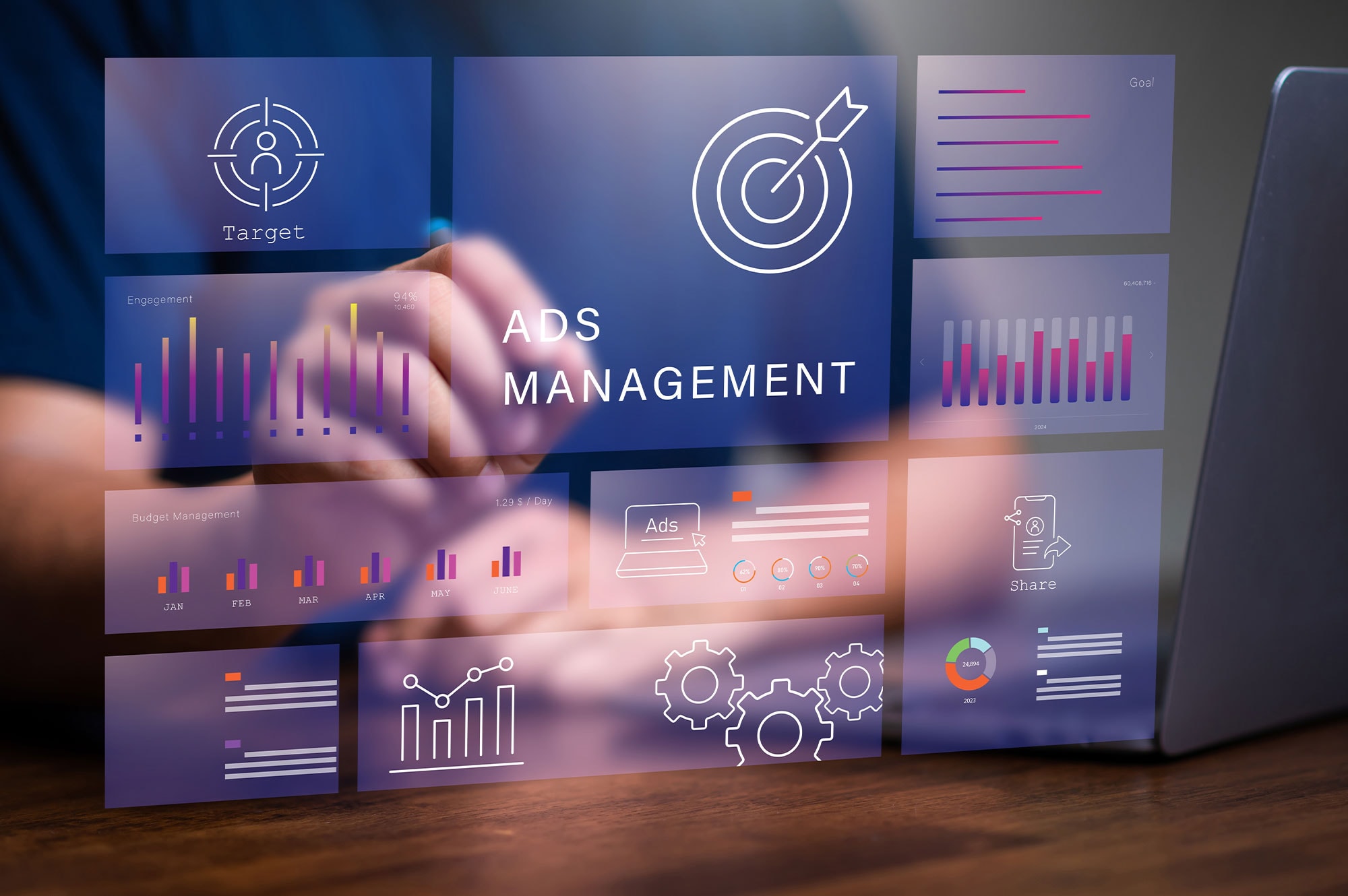The Campainless Blog

LinkedIn Ads play a crucial role in B2B marketing strategies, helping brands reach decision-makers, generate leads, and drive conversions. However, tracking LinkedIn analytics effectively is essential for optimizing campaigns and ensuring maximum ROI.
This comprehensive LinkedIn Ads Metrics Glossary covers all the important LinkedIn metrics, explaining what they mean, why they matter, and what benchmarks to aim for. Whether you’re a marketer, agency, or business owner, this guide will provide valuable insights into your LinkedIn marketing efforts.

Engagement metrics measure how users interact with your LinkedIn posts and sponsored posts. These are key indicators of content relevance and audience interest.
Definition: The percentage of people who clicked on your ad or post after seeing it. CTR specifically focuses on chargeable clicks, which are the clicks that advertisers pay for.
Formula:
CTR = (Total Chargeable Clicks / Total Impressions) × 100
Why It Matters: Understanding the number of clicks is a critical metric for evaluating advertising effectiveness. A high CTR indicates that your content resonates with your target audience and encourages action. This metric helps gauge both brand awareness through ad clicks and the overall success of a campaign in driving conversions on platforms like LinkedIn.
Good Baseline:
Definition: The percentage of users who engage (clicks, reactions, comments, shares) with your post or ad.
Formula:
Engagement Rate = (Total Engagements / Total Impressions) × 100
Selecting a campaign objective that aligns with the engagement objective is essential for ensuring the accuracy of the benchmarks used in marketing evaluations.
Why It Matters: Measures overall interest and interaction levels. A higher rate means stronger audience engagement. Good Baseline: 1% – 2%
Definition: The number of times users react to a post (e.g., Like, Celebrate, Love).
Why It Matters: Helps gauge sentiment and audience response to your content.
Good Baseline: Varies by content type but should show steady growth over time.
Definition: The number of times a post is shared by LinkedIn users.
Why It Matters: Shows organic reach expansion and content virality. Additionally, users sharing a sponsored content ad significantly contribute to the overall viral metrics of a campaign. Tracking these metrics is crucial to understanding the effectiveness of the sponsored content and its reach among a user’s network.
Definition: The number of comments on a post or ad.
Why It Matters: A strong indicator of engagement and deeper audience interest.
Conversion metrics track how well your ads drive actions, such as lead generation or website visits. Tracking the most important LinkedIn metrics is crucial to optimize marketing efforts, as it helps gauge the performance of your LinkedIn pages, improve engagement, and strategize content effectively to enhance your B2B presence. Accurate metrics for a campaign are essential for assessing performance and aligning with established guidelines.
LinkedIn’s analytics tools provide valuable insights into follower demographics, engagement rates, and overall performance, making them essential for tailoring content strategies effectively.
Definition: The number of times users open a LinkedIn Lead Gen Form after clicking an ad.
Why It Matters: Indicates the effectiveness of your ad in generating interest.
Good Baseline: Varies by industry but 20% – 30% of form opens should ideally convert to submissions.
Formula:
Lead Form Opens = Total Ad Clicks × Lead Form Open RateDefinition: The number of users who complete and submit a Lead Gen Form. Why It Matters: Directly tied to LinkedIn marketing strategy success in generating qualified leads. Good Baseline: 10% – 15% conversion rate from form opens.
Using historical data to benchmark your CPL can provide a more accurate measure of success by comparing current performance against your own past metrics.
Formula:
Lead Form Submissions = Lead Form Opens × Submission Rate
Definition: The average cost incurred to generate one lead.
Formula:
CPL = Total Ad Spend / Total LeadsWhy It Matters: Lower CPL indicates more efficient marketing efforts.
Good Baseline:
Definition: The number of users who take a specific action on your site after clicking an ad (e.g., form submission, purchase).
Why It Matters: Measures ad effectiveness in driving valuable actions.
Lead gen forms are crucial for tracking conversions and leads from advertising campaigns, as they help assess the effectiveness of marketing efforts focused on driving user actions such as signups or downloads.
Definition: The percentage of users who complete a desired action after clicking an ad.
Formula:
Conversion Rate = (Total Conversions / Total Clicks) × 100Why It Matters: Shows how well your ad and landing page drive conversions.
Good Baseline: 2% – 10% depending on industry.
Video ads are a powerful tool in LinkedIn marketing strategy, but measuring their performance is crucial.
Definition: The number of times a video ad was viewed for at least 2 seconds while at least 50% of the video was in view.
Why It Matters: Indicates how well your video content captures initial attention.
Outstream video ads, unlike in-stream video ads, often have lower completion rates because they do not require active viewer engagement, which can impact overall view metrics.
Good Baseline: 30% – 50% view rate
Definition: The percentage of users who watch your video ad to completion.
Formula:
Completion Rate = (Completed Views / Total Views) × 100Why It Matters: Higher rates suggest engaging video content.
Good Baseline: 15% – 30%
Definition: The average amount spent per video view.
Formula:
Cost Per View = Total Ad Spend / Total Video ViewsWhy It Matters: Helps optimize budget allocation for video ads.
Good Baseline: $0.05 – $0.10 per view
Tracking LinkedIn ads performance requires monitoring efficiency-related metrics.
Definition: The cost incurred per click on your ad.
Formula:
CPC = Total Ad Spend / Total Clicks
Why It Matters: Lower CPC means more cost-efficient ad performance. Considering additional campaign metrics alongside CPC can provide deeper insights into campaign performance and facilitate more informed decision-making. Good Baseline:
Definition: The cost per 1,000 ad impressions.
Formula:
CPM = (Total Ad Spend / Total Impressions) × 1000Why It Matters: Helps assess the cost of visibility.
Good Baseline: $30 – $90
Definition: The revenue generated for every dollar spent on ads.
Formula:
ROAS = Revenue from Ads / Total Ad SpendWhy It Matters: Indicates overall ad profitability.
Good Baseline: 3x – 5x
Definition: The percentage of total eligible impressions your ad received.
Why It Matters: A higher share means better ad visibility.
Formula:
Impression Share = (Total Impressions / Total Eligible Impressions) × 100Your LinkedIn company page is a key asset in your social media strategy. Tracking LinkedIn Page Analytics provides valuable insights into your brand’s reach, audience engagement, and growth. Understanding various metrics associated with LinkedIn Pages, such as audience growth and engagement rates, is crucial for tailoring your strategies for better outcomes.
Definition: The number of times your company page was viewed.
Why It Matters: Indicates brand visibility and how often people visit your LinkedIn presence.
Accessing specific video metrics in Campaign Manager is crucial for a detailed analysis of your video ads’ performance. By selecting Video as a column view from the reporting dashboard or during report exports, you can gain targeted insights.
Good Baseline: Consistent growth over time is key.
Formula:
Page Views = Total Views of Company Page in a Given Period
Definition: The number of individual LinkedIn users who visited your company page, excluding repeat visits.
Why It Matters: Helps measure brand reach beyond existing followers.
Exporting a report with specific metrics related to video ads performance can provide better insights by selecting video as a column view in the reporting dashboard.
Good Baseline: Growth of 5% – 10% per month is a healthy sign.
Formula:
Unique Visitors = Total Individual Users Visiting the Page in a Given Period
Definition: Data on the people visiting your page, including job function, industry, location, and company size.
Why It Matters: Helps ensure your target audience aligns with your LinkedIn marketing strategy.
Definition: The number of LinkedIn users who started following your page within a given period.
Why It Matters: Tracks brand growth and organic reach.
Good Baseline:
Formula:
New Followers = Total Followers at End of Period − Total Followers at Start of PeriodDefinition: The total number of followers and how quickly your LinkedIn company page is gaining new ones.
Why It Matters: Indicates brand credibility and organic reach.
Good Baseline: 5% – 10% monthly follower growth.
Formula:
Follower Growth Rate = (New Followers / Total Followers at Start of Period) × 100Definition: Insights into your followers’ job titles, industries, company sizes, and locations.
Why It Matters: Helps tailor content to attract the right audience.
Definition: The percentage of interactions (likes, comments, shares, clicks) your posts receive.
Why It Matters: Indicates how engaging your content is for your LinkedIn audience.
Good Baseline: 1% – 2% engagement rate is strong for organic posts.
Formula:
Engagement Rate = (Total Engagements / Total Impressions) × 100Measuring both organic and paid performance helps refine your LinkedIn marketing efforts.
Definition:
Organic Reach Formula:
Organic Reach = Total Unique Users Who Saw the Post Without Paid Promotion
Paid reach formula:
Paid Reach = Total Unique Users Who Saw the Sponsored Post
CPM (Cost per Mille): CPM rates are measured based on total impressions, quantified in sets of 1,000 impressions.
Definition: Comparison of engagement rates between organic and paid posts.
Why It Matters: Identifies whether organic content is performing well or if LinkedIn ads are necessary for higher engagement.
Organic engagement rate formula:
Organic Engagement Rate = (Total Organic Engagements / Total Organic Impressions) × 100Paid engagement rate formula:
Paid Engagement Rate = (Total Paid Engagements / Total Paid Impressions) × 100Definition: The cost to generate a single interaction (click, reaction, comment, share) on a paid post.
Formula:
CPE = Total Ad Spend / Total EngagementsWhy It Matters: A lower CPE means more cost-effective LinkedIn advertising.
Good Baseline: $0.50 – $2 per engagement, depending on the audience and industry.
Definition: The percentage of total engagement coming from organic vs. paid efforts. Why It Matters: Helps optimize content distribution.
Organic Share Formula:
Organic Engagement Share = (Total Organic Engagements / Total Engagements (Organic + Paid)) × 100
Paid Share Formula:
Paid Engagement Share = (Total Paid Engagements / Total Engagements (Organic + Paid)) × 100

Understanding your LinkedIn audience ensures better marketing strategy alignment.
Definition: Insights on engagement patterns, job roles, and industries of engaged users.
Why It Matters: Helps fine-tune messaging and targeting.
Understanding the network of connections is crucial for gaining better audience insights, as it amplifies the reach and impact of your content when users share it within their own networks.
Definition: Measures how your ads perform across LinkedIn’s Audience Network (partner websites and apps).
Why It Matters: Expands ad reach beyond LinkedIn’s platform.
Definition: Identifies which formats drive the highest engagement (e.g., video vs. articles vs. image posts).
Why It Matters: Guides content marketing strategies.
Using LinkedIn analytics tools improves campaign optimization and performance tracking. LinkedIn’s analytics tools enable users to analyze follower demographics, track engagement rates, and compare organic versus sponsored growth.
Definition: The built-in LinkedIn reporting tool that tracks post and page performance.
Why It Matters: Provides quick valuable insights into engagement, reach, and audience demographics. Viral metrics are crucial in evaluating the performance of content, particularly in relation to viral videos and advertisements.
Selecting ‘view from the reporting’ allows users to access specific metrics related to video ads by choosing Video as a column view on the reporting dashboard, offering better insights into the performance of their video campaigns.
Definition: Compiling a LinkedIn analytics report involves customizing the report to focus on specific metrics and insights, enabling data-driven decision-making.
Why It Matters: Helps refine LinkedIn marketing strategy with clear KPIs.
Definition: Monitoring long-term trends in engagement, followers, and conversions. Why It Matters: Ensures continuous improvement of LinkedIn marketing efforts.
Long-term tracking can help you measure the effectiveness of your campaigns by analyzing key performance indicators such as conversions and cost per lead.
Effectively tracking LinkedIn analytics ensures marketing agencies and brands gain deeper insights into campaign performance. From visitor analytics to sponsored posts, understanding these key LinkedIn metrics allows businesses to optimize LinkedIn strategy for better engagement, conversions, and brand visibility.
By leveraging LinkedIn analytics tracking, businesses can improve their social media strategy, refine content marketing, and make data-driven decisions for future posts.

Understanding benchmark ranges helps businesses evaluate their LinkedIn marketing efforts against industry standards.
Here’s a breakdown of typical performance benchmarks across different industries:
| Metric | B2B SaaS | Finance | Healthcare | Tech & IT | Recruitment |
|---|---|---|---|---|---|
| CTR (Click-Through Rate) | 0.35% – 0.55% | 0.30% – 0.50% | 0.25% – 0.45% | 0.40% – 0.60% | 0.50% – 0.70% |
| Engagement Rate | 1% – 2% | 0.8% – 1.5% | 0.6% – 1.2% | 1.2% – 2.5% | 1.5% – 3% |
| CPC (Cost Per Click) | $5 – $12 | $7 – $15 | $8 – $20 | $4 – $10 | $3 – $8 |
| CPM (Cost Per 1,000 Impressions) | $30 – $85 | $40 – $95 | $50 – $120 | $25 – $75 | $20 – $60 |
| Lead Form Submission Rate | 10% – 20% | 8% – 18% | 5% – 15% | 12% – 22% | 15% – 25% |
Tracking performance for effective marketing strategies is crucial, especially in the context of campaign performance or ad performance. These key LinkedIn metrics will vary based on targeting, ad format, and audience.
For example, a B2B SaaS company might aim for a CTR of 0.35% to 0.55% by targeting decision-makers with a carousel ad format, while a recruitment firm could achieve a higher CTR of 0.50% to 0.70% by focusing on job seekers with single image ads.
For LinkedIn company pages, here are industry standards for organic reach and engagement:
| Metric | Good Baseline |
|---|---|
| Organic Engagement Rate | 1% – 2% |
| Click-Through Rate (CTR) | 1.5% – 3% |
| LinkedIn Reactions Per Post | 50 – 200 |
| Shares Per Post | 10 – 50 |
| Comments Per Post | 5 – 20 |
| Monthly Follower Growth | 5% – 10% |
If your LinkedIn post analytics show lower numbers, your content may not be resonating with your target audience.
Want to boost your LinkedIn performance? Follow these best practices:
Use compelling headlines (e.g., “Are You Making This LinkedIn Ad Mistake?”)
Add strong CTAs like “Download Now” or “Learn More”
Optimize ad creatives with high-contrast visuals and short copy
A/B test different LinkedIn audience targeting
Use storytelling in captions instead of dry corporate messaging
Post carousel documents (LinkedIn favors interactive content)
Leverage LinkedIn reactions by encouraging discussion
Post at optimal times (Tuesday–Thursday, 8–10 AM & 12 PM)
Narrow targeting to high-intent LinkedIn users
Retarget website visitors using LinkedIn Audience Network
Use video ads (often cheaper than static ads)
Optimize landing pages to improve conversion rate

Effectively tracking LinkedIn analytics is essential for optimizing ad performance, improving engagement, and maximizing ROI. Whether you’re analyzing CTR, CPC, ROAS for LinkedIn ads or monitoring organic engagement rates, visitor demographics, and follower growth, understanding these key metrics empowers you to make data-driven marketing decisions.
By leveraging LinkedIn analytics tools, businesses can refine their content strategy, optimize ad spend, and enhance audience targeting to drive higher conversions and engagement. Consistently monitoring these metrics ensures that B2B brands, agencies, and marketers stay ahead of the competition by making smarter, more informed advertising decisions. Additionally, tracking these metrics allows you to measure the effectiveness of your LinkedIn marketing efforts, ensuring alignment with your specific marketing objectives.
Want to automate and optimize your LinkedIn ad campaigns effortlessly?
Campainless simplifies LinkedIn ad management with:
Early access is now open! Be among the first to experience smarter, more effective LinkedIn advertising.
Register for Early Access to get a head start in optimizing your LinkedIn campaigns!